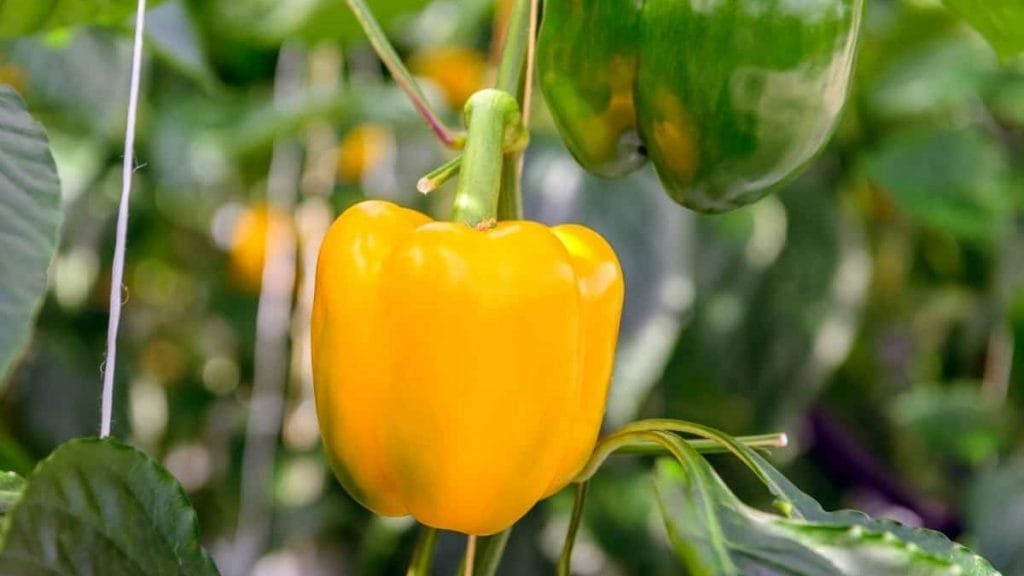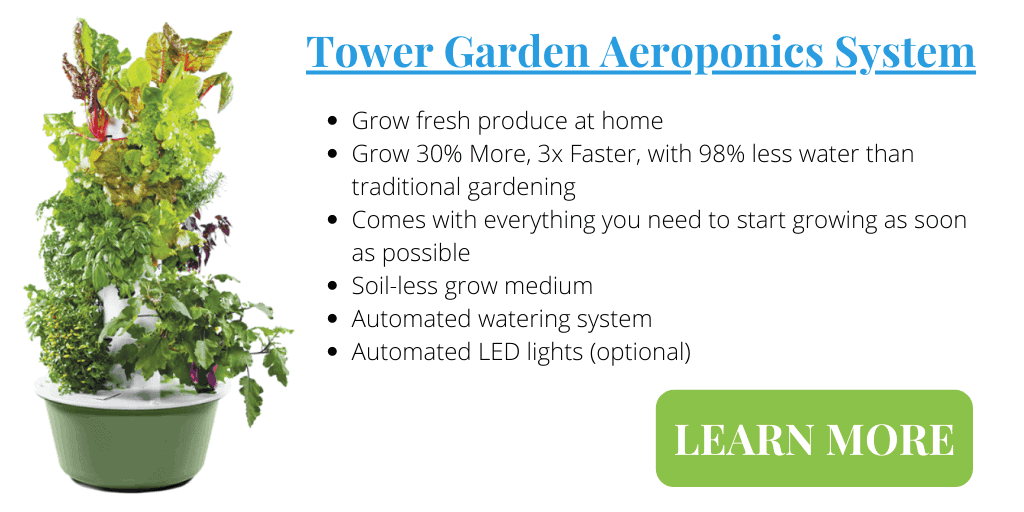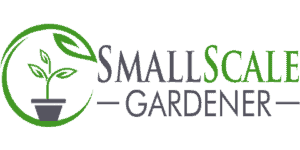Growing food in a grow tent at home is a fun way to keep my peppers and other vegetables harvesting all year round. Bell peppers, capsicums, chilis, jalapenos and many other varieties of peppers can easily be grown indoors because they take very little effort to pollinate.
To grow peppers in a grow tent, you have to create the ideal growing conditions for your peppers. The ideal growing conditions are made up of these four main factors; temperature, humidity levels, Co2 levels, and the amount of light the pepper plant is getting per day.
The following is a far more in-depth explanation of how to grow peppers in a grow tent and the ideal climate for growing peppers, as well as some information about how to do it with a hydroponic system, so hang around and don’t miss out.

How To Grow Peppers In A Grow Tent?
To grow peppers in a grow tent, you have to place a seedling in the grow tent. Provide the seedling with lighting for 18 hours per day and water indirectly every day for six weeks. Once the plant is mature, you have to move it into a large pot, start watering directly and switch it to 16 hours light per day.
We all know that when you start growing plants outside, it can be somewhat of a learning curve, and using a grow tent is the same. The only difference is that you have the power to control everything with a grow tent. This control helps to produce the best pepper yields possible.
To grow peppers in a grow tent successfully, you have to create the perfect growing conditions tailored towards peppers. In the wild, peppers are tropical plants, which means that the ideal growing conditions for peppers are slightly hot and very humid conditions with lots of water and well-aerated soil.
If you are interested in what other plants grow well in a grow tent, check out my article, What Can Grow In A Grow Tent?
However, when growing Peppers in a grow tent, you don’t merely recreate the same growing conditions as in the wild. You create the perfect growing conditions by providing the pepper plant with:
- The ideal amount of light per day
- The ideal amount of Co2
- The ideal amount of water per day
- The ideal levels of heat and humidity
Providing the right amount of these elements allows you to grow healthy and robust pepper plants. Additionally, if you are using a hydroponic system, you will be providing the plant with all the various nutrients it needs to grow and checking that the Ph and EC are at the correct levels.
Here is some more information on fire hazards and safety of gardening in a grow tent.
What Is The Ideal Water Temperature For Growing Peppers?
When growing peppers, you only have to worry about the water temperature when growing with a hydroponic setup. This is because the temperature of the water also affects how much oxygen is in the water.
The general rule is that the nutrient solution in your reservoir (the majority of which is water) should always be at roughly 65℉. Having the water at this temperature lets you avoid your plants getting root disease.
The only time you have to worry about the temperature of your water when you are growing with a pot and soil is in winter, and the water temperature is far too low. This is because you do not want to freeze your plant’s roots.
I grow bell peppers and jalapeños in my home office using a Tower Garden vertical aeroponic system. My self watering indoor home garden spends the winter in my grow tent and I wheel it outside for the spring and summer. Learn more about heating your grow tent in winter in my article, Keeping your Grow Tent Warm.

How Many Hours Of Light Do Peppers Need Per Day?
When growing peppers inside a grow tent you’ll want to use some full spectrum LED lights to get the best growth and fruiting of your peppers. Peppers need a lot of light and because they are a flowering plant you’ll need a lighting setup to cover the growth and flowering cycles.
Once established in your indoor garden, give your plants roughly 16 to 18 hours with the grow light on and 6 to 8 hours of the light being off per day. Giving your pepper plants this amount of light allows your plants to grow tall and robust.
I use 4ft full spectrum LED grow lights in my grow tent, the lights look like a fluorescent tube and only consume 45 watts each. I have 8 of them placed around the interior of the tent to get the best balance of lighting to all the plants.
- Full Spectrum: Barrina LED grow lights 4ft provide indoor plants with full-spectrum sunlight...
- Super Bright and High PPFD: Consuming only 252W with 1152 LEDS totally, replace 1400w general...
- Easy Installation: With included tape, clips and cable ties, you could install the lights by...
What Is The Ideal Amount Of Water For Peppers Per Day?
Your pepper plants will naturally absorb the ideal amount of water if they have access to a fresh supply. Overwatering will damage and possibly kill your plants so keeping a well drained soil or growing medium is very important. The following watering techniques will ensure that your seedlings and adult plants get enough water per day.
Watering Pepper Seedlings
Watering pepper seedlings is a delicate process. You cannot water the seedlings directly, so you have to water the pepper seedlings indirectly. You do this by using a deep spill tray or Tupperware. Whichever container you are using, you have to put the small seedling pot or pots in the container and then add a half-inch of water to the container.
You will then leave the seedlings in the water for roughly five minutes and then remove them from the water. Be sure not to let the seedlings become too wet, or the roots may start to rot. Every day you will repeat this process until the seedlings are mature enough to be transplanted.
Watering Adult Pepper Plants
Watering an adult pepper plant is much easier than watering a seedling. You fill a large watering can halfway or one-quarter of the way and then gently but consistently paw the water around the plant.
Then you are going to wait for 10 minutes for the water to work its way through to the catch tray at the bottom of the pot. If there is water in the tray, then you will have to dispose of the water.
Naturally, these techniques do not apply when growing pepper plants hydroponically; growing peppers with a hydroponic system is an entirely different process where the roots are submerged in oxygenated water.
Adding oxygen to the water prevents the water from becoming stagnant and prevents the roots from suffocating. It prevents the roots from choking because plants take oxygen in through their roots. Check out my recent post covering Dissolved Oxygen In A Hydroponic System.
The best way to set up your grow tent is to use an automatic watering system. Most systems are designed using a digital timer, some tubing, drip emitters and a water supply. The water supply can be either a pump in a reservoir or a direct connection to a hose bib or domestic supply line.
- 【Remote Control App】With RainPoint APP, you can remotely manage multi-watering plans,...
- 【Notice Before Purchase】Only connect with 2.4GHz WiFi, for dual-band router, please...
- 【Worry-free Watering】With “Automatic” function, customize your irrigation plans with...
What Are The Ideal Co2 Levels For Growing Peppers?
In the outside air, the ambient levels of Co2 are roughly 340ppm (Parts Per Million). Every plant in the world that can photosynthesize will grow well with a Co2 level of 340ppm. However, if the Co2 levels drop below 340ppm, the plants will experience a significant drop in the rate of growth as well as other adverse side effects.
In order to avoid experiencing a drop in Co2 levels, you have to supplement the grow tent with Co2. By increasing the Co2 levels in the Grow tent to a level somewhere between 1000ppm and 1300ppm, you can avoid experiencing a drop in growth. In fact, you will see the exact opposite, with your plants growing 5%-10% faster.
If you are growing your pepper plants from seed, it is highly suggested that you only increase the Co2 levels to roughly 800ppm or 1000ppm until the plants are more mature.
- 【Large LCD Screen】Multiple measurements simultaneously on a large LCD screen: (1) CO2, (2)...
- 【Store Up To 15,999 Data】Large capacity for data logging and adjustable sampling frequency:...
- 【Connect With PC】Connectable to PC for further in-depth analysis: USB cable and software...
What Is The Ideal Humidity Level And Temperature For Peppers?
Like every other tropical plant, peppers are fond of medium to high humidity and high temperature. Pepper plants grow the best when grown in the temperature range of 70℉ to roughly 80℉ with a humidity range of anywhere from 40% humidity to 60% humidity.
This isn’t to say that peppers won’t grow in lower temperatures and humidity; these are simply the ranges they prefer to grow in. I created a guide on using a dehumidifier in a grow room.
Are There Different Types Of Peppers?
When the majority of people think of peppers, they are likely thinking of the bell pepper, sometimes known as red, yellow, or green peppers. However, this is not the only type of pepper. Let us find out what other types of peppers there are.
Plants that fall under the classification of capsicum annuum are peppers, whether they are sweet or not. All chilis are types of peppers, no matter how hot, that Includes but is not limited to; the Bird’s eye, the Jalapeño, the Habanero, the Serrano, the Trinidad scorpion, and all types of paprika.
Do All Peppers Grow The Same Way?
When growing multiple types of pepper plants in a single grow tent, you can use all of the same nutrients, light timing, Co2 levels, humidity levels, temperature, and growing techniques that you would use to grow your bell peppers.
All peppers are part of the same family. Because of this, you have to be careful to avoid cross-pollination of your bell peppers and your chili peppers. If your bell peppers and chili peppers do land up, cross-pollinating the peppers from that bush will still be the same size, shape, and flavor.
However, the seeds from that pepper or chili pepper will be a hybrid pepper. If you try to plant seeds from that hybrid pepper may not grow at all, but if the seeds do start to grow, the fruits from that plant could be an unpleasant and excessively hot bell pepper that is horribly bitter.
What Are The Nutrients Needed To Grow Peppers?
When growing peppers in a grow tent, there are two different ways to grow in soil and with hydroponics.
When growing peppers in soil, most of the nutrients and minerals are already present in the soil, but you still have to replace; the Nitrogen, phosphorus, and potassium frequently because otherwise, these nutrients will run low in the pot your peppers are growing in.
However, when growing peppers hydroponically, you use a high quality nutrient solution to provide the nutrients and minerals the peppers need. This helps your plants grow fast, have a large harvest and provide our bodies with fresh and healthy food. Here’s a guide to hydroponic nutrient solutions.
Nutrients And Minerals Needed For A Hydroponic Grow
- Nitrate
- Calcium
- Ammonium
- Magnesium
- Potassium
- Iron
- Zinc
- Copper
- Manganese
- Boron
- Sulfates
- Molybdenum
- Phosphate
- Sodium
- Chloride
How Much Of Each Nutrient Is Needed For A Hydroponic Grow?
The minerals that plant roots absorb are typically split into 2 categories, micronutrients and macronutrients. Many of these minerals can be found in soil but they tend to vary widely by location and soil type. Growing with hydroponics allows you to direct feed the right mix of nutrients to the roots of your plants. Here’s my latest article on the best nutrients for growing vegetables.
PPM stands for (Parts per million).
EC stands for (electrical conductivity).
pH stands for (potential of hydrogen).
Nitrate – (200 ppm) for the first six weeks and (180 ppm) for an older plant
Calcium – (220 ppm) for the first six weeks and (200 ppm) for an older plant
Ammonium – (7 ppm) for the first six weeks and (15 ppm) for an older plant
Magnesium – (50 ppm) for the first six weeks and (45 ppm) for an older plant
Potassium – (240 ppm) for the first six weeks and (270 to 300 ppm) for an older plant
Iron – (1.5 ppm) for the first six weeks and (1 ppm) for an older plant
Zinc – (0.33 ppm) for the first six weeks and (0.33 ppm) for an older plant
Copper – (0.05 ppm) for the first six weeks and (0.05 ppm) for an older plant
Manganese – (0.55 ppm) for the first six weeks and (0.55 ppm) for an older plant
Boron – (0.3 ppm) for the first six weeks and (0.3 ppm) for an older plant
Sulfates – (20 ppm) for the first six weeks and (20 ppm) for an older plant
Molybdenum – (0.05 ppm) for the first six weeks and (0.05 ppm) for an older plant
Phosphate – (50 ppm) for the first six weeks and (50 ppm) for an older plant
Sodium – (<100 ppm) for the first six weeks and (<100 ppm) for an older plant
Chloride – (<300 ppm) for the first six weeks and (<300 ppm) for an older plant
The EC of the nutrient solution should be at 0.8 to 1.8 for the first six weeks and then 2.5 once the plant is mature.
The pH should be at 5.5 to 6.0 at all times, regardless of the maturity of the plant.
Conclusion
We have discovered how to grow peppers in a grow tent, what the criteria are for creating the ideal climate, how much water to provide your seedlings and adult plants, as well as what some of the different types of peppers are.
We have also learned that all chilies are peppers, that all chili and sweet peppers grow in the same conditions, what levels the pH and EC have to be at, and what nutrients are needed for both soil-grown plants as well as hydroponically grown plants, including the exact amount of each. Now that you have grown your mind, let us grow some peppers.




